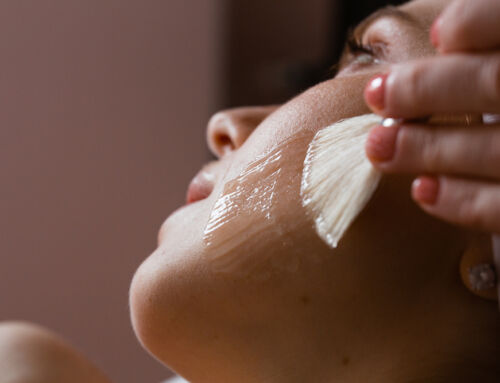
A Brazilian Butt Lift (BBL) is a popular cosmetic procedure designed to enhance the shape and size of your buttocks. Despite the name, it is not a lift—in the sense that it won’t treat excess or sagging skin—and it is not Brazilian. The medical name for the procedure is a gluteal fat graft.
So, to achieve curvier, fuller buttocks, a qualified and skilled physician removes fat from one area of the body via liposuction and strategically re-injects it into the buttocks. You can use fat removed from the abdomen, lower back (love handles), upper back (bra bulge), thighs, and arms.
15 BBL Tips
To achieve and maintain the perfect BBL, you must follow a combination of pre-operative and postoperative steps and make long-term lifestyle changes. Following these recommendations will increase your chances of retaining as much buttock fat as possible during recovery to ensure optimal results and a long-lasting hourglass figure. Here are some tips to help you get and maintain the perfect BBL:
1. Choose a skilled, qualified surgeon
Find a board-certified plastic surgeon with extensive experience performing BBL procedures. Research their credentials, view before-and-after photos, and read patient reviews to ensure you select the right surgeon.
Most importantly, make sure the facility is safe and reports satisfactory surgical outcomes. Your surgeon should have your best interests in mind, guide you through proper recovery, and monitor your aftercare for the best and longest-lasting results.
For your safety, you can ask the surgeon about the risks of fat embolism, which is when fat enters the bloodstream and causes complications. A skilled cosmetic surgeon will tell you the safety measures they take to ensure a smooth and successful BBL.
2. Consultation and communication
During your consultation, discuss your goals and expectations with your surgeon. Make sure you both have a clear understanding of what you want to achieve.
During the consultation, the surgeon will determine if you are a good candidate for the procedure.
Good candidates will:
- Be an adult who has finished developing physically
- Be physically healthy
- Be a non-smoker
- Be mentally stable with realistic expectations
- Have excess body fat to transfer to the buttocks
3. Follow pre-operative guidelines
Your surgeon will provide pre-operative instructions to prepare for the procedure. These may include quitting smoking, adjusting medications or herbal supplements, and maintaining a healthy lifestyle.
4. Plan for recovery
Arrange for help during the initial recovery period, as you will likely need assistance with daily activities for the first few days. Ask a friend or family member to stay with you during the first week or so to help. Follow your surgeon’s postoperative care instructions diligently.
Since you will need to rest for a while, take time to prepare a recovery space. Have the essentials within reach, like phone chargers, water bottles, and any recovery items you need.
Stock up on healthy snacks and food, comfortable clothes, compression garments, cushions, toilet seat risers, pain medications, and anything else your doctor recommends.
5. Wear compression garments and loose clothes
After the procedure, wear compression garments as your surgeon prescribes, usually for up to six weeks. These garments help reduce swelling and support the buttocks and where the fat was removed.
Be sure the garments fit snugly but do not hinder blood flow. The transferred fat cells need enough blood supply to survive.
Also, avoid wearing tight-fitting clothes like skinny jeans during the healing process. Squeezing or applying too much pressure on the buttocks can destroy the transferred fat cells. So, stick to looser, comfortable clothing that you can wear over your compression garments.
And remember: clothes that are loose now may not be so loose around the hips after surgery.
6. Maintain a healthy diet
Eat a balanced diet rich in nutrients to support healing and maintain your results. Adequate protein intake is essential for tissue repair and growth. Aim for twenty to thirty-five percent of your calories to come from protein. For a nutrient-rich, high-protein diet, stick to foods like whole grains, fresh fruits and vegetables, chicken breast, and fish.
Feed the fat
You may have heard of “feeding the fat” after having a BBL. Since you have relocated fat cells in your body, they will need help to survive in their new environment. One way to help is to incorporate healthy fats into your diet.
Choose foods like:
- Salmon
- Nuts
- Olive oil
- Avocados
- Dark chocolate (80% cacao or higher)
- Full-fat yogurt
- Cheese
However, you must keep in mind that foods with healthy fats are very calorie-dense, so it’s important not to eat them in excess. For the best BBL results, you need to maintain your weight as much as possible and stay within your recommended daily caloric intake.

7. Stay hydrated
Drinking plenty of water aids in recovery and keeps your skin and tissues healthy. Healthy, elastic skin will help you achieve the best results possible. Plus, it helps flush any toxins.
8. Avoid sitting or lying on your buttocks
This is crucial for the initial healing period, typically about 3-6 weeks. Pressure on the newly transferred fat cells can prevent blood flow and suffocate them. Use a cushion or special BBL pillow when sitting to keep the pressure off your buttocks. Foam and egg-crate cushions also work great.
For sleeping post-surgery, you may want to sleep on your stomach for about two months. You can sleep on your side, but sleeping on your stomach puts the least pressure on your buttocks. If you like, you can find BBL cushions and mattresses to help keep pressure off your buttocks when you use the bathroom or lay down.
9. No smoking, vaping, tobacco products, or too much alcohol
Smoking, tobacco products, and excessive alcohol can impair the healing process and affect your results. Avoid them during the recovery period.
Tobacco can cause blood vessels to constrict, making it harder for oxygen to move throughout the body and heal it. In fact, a surgeon may refuse to operate on a smoker because of the added risks.
Alcohol dehydrates the body, leads to inflammation, and can negatively interact with medications. Proper hydration and minimizing inflammation is crucial for a smooth recovery, so alcohol should be avoided.
10. Follow the exercise guidelines
Your surgeon will recommend when and how to resume physical activity. Start with light, low-impact exercises and gradually increase intensity. First, prioritize rest, as proper rest will help swelling go down more quickly.
After recovery, exercise to stay in shape. You may also want to incorporate glute, hamstring, and leg-focused exercises to build muscle that will support and lift your curvy buttocks.
11. Be patient
It takes time for the swelling to subside, and it may take several months before you can see your final results. Do not try to rush your recovery by becoming too active too soon. Give your body all the time it needs to recover.
During your recovery, follow up with your surgeon as scheduled so they can monitor your progress and see how your body heals.
12. Maintain a stable weight
Fluctuations in weight can affect your BBL results. Aim to maintain a stable, healthy weight through a balanced diet and regular exercise.
It’s ok if your body fluctuates a little, as swelling and fluid retention may add weight. Gaining or losing five to ten pounds is expected, but anything more than that can affect your results.
13. Regular massages (maybe)
Some surgeons recommend postoperative lymphatic massages to help reduce swelling and improve the contour. However, do not touch the buttocks for at least six weeks. Listen to your surgeon’s advice and guidelines on massages.
14. Protect your skin from the sun and moisturize
Sun exposure can affect the appearance of scars and the skin on your buttocks. Use sunscreen and protective clothing when exposed to sunlight.
Additionally, keep your skin moisturized to encourage elasticity. Good skin elasticity will ensure your results stay looking good and can help prevent stretch marks.

15. Be realistic about your expectations
Understand that the results of a BBL can vary from person to person. Like any fat graft procedure, not all the transferred fat will survive during recovery. Between twenty to forty percent of fat won’t survive, which your body will flush out. Furthermore, immediately post-surgery, you will have swelling, which will decrease as you heal.
Of course, by following the above advice, you will preserve as much transferred fat as possible and yield the best BBL results. You will see what your buttocks will look like long-term, around three months after your cosmetic surgery. Depending on how your body changes, you may need a follow-up treatment about ten years later.
Final Thoughts
Remember, the key to maintaining the perfect BBL is a combination of an excellent surgical outcome, diligent postoperative care, and a healthy lifestyle. Always consult with your surgeon for personalized advice and recommendations.
The Perfect BBL Surgery
at Garza Plastic Surgery in Nashville
If you’re interested in Brazilian butt lift surgery in Nashville or any other cosmetic procedure, double board-certified plastic surgeon Dr. Robert Garza is the surgeon for you. Known as a reputable surgeon for over a decade, Garza and his stellar team customize their approach to meet your unique aesthetic goals. Book a consultation today to see how we can help you meet your goals.





